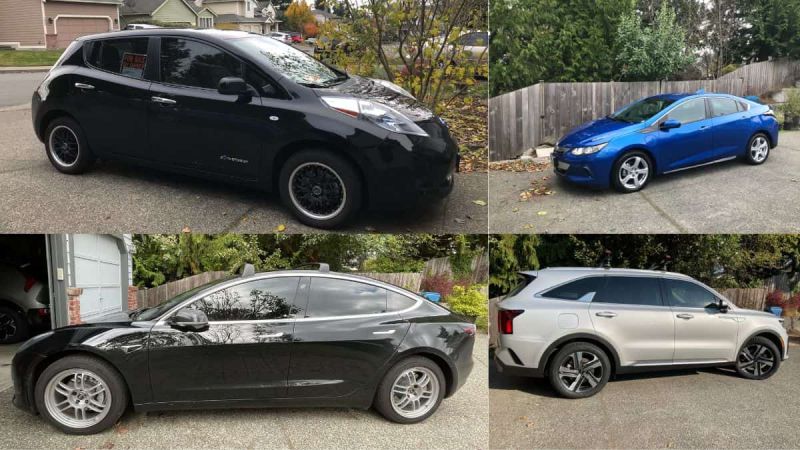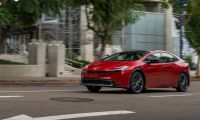These state and local incentives can sometimes save buyers more than the federal incentive does (like certain cases in Maine or California). But the state by state nature of these incentives may also be confusing, since not only do consumers have to understand the fairly convoluted federal incentive structure, which is only applicable to 14 EVs (and 5 plug-in hybrids (PHEVs)) at this time, they also need to understand the potentially even more arcane, or temporary nature, of their state (or local) incentives as well, if they want to get the best possible price on a new EV (or PHEV). Here’s a few examples of various state incentives: Delaware ($2,500 for EVs, $1,000 for PHEVs), Minnesota (up to $2,500 for new EVs and PHEVs, up to $600 for used), Illinois ($4,000 for EVs, $1,500 for electric motorcycles), and California, which is currently without a statewide plug-in vehicle incentive, however it has numerous city/county/regional incentives that range from hundreds to thousands of dollars in rebates for new and used purchases and California also has a state sales tax exemption for EV and PHEV vehicles purchased under its Clean Cars 4 All program. Several other states have incentives as well. Check out the US Department of Energy’s Alternative Fuels Data Center to read up on local, state, and federal incentives (which may include incentives for charging equipment, rebates for businesses, fleets, state and local governments to purchase or lease EVs and PHEVs, and more).
But let’s say you live in a state or region where there really are no other incentives than maybe the federal incentive and you are looking for an EV or PHEV that has a final cost of $35,000, or less, after incentives (if applicable). How many options do you have? Besides 4 of the 14 EVs (multiple versions of the Tesla Model 3 and Model Y as well as the Chevy Bolt and Bolt EUV) and none of the 5 plug-in hybrids referenced above, there are also 3 EVs that have an MSRP starting below $35,000 before any incentives, period. Those 3 EVs are: the Hyundai Kona EV, the Nissan LEAF, and the Mini Cooper SE Hardtop Signature. Note the 2023 Chevy Bolt and EUV, which ended production in December last year, will not be available new for long as their remaining stock is dwindling fast. There are also other EVs coming later this year that are supposed to start in that range and of course there are thousands of used EVs (which are eligible for up to a $4,000 federal rebate if their sale price does not exceed $25,000). As far as PHEVs go, since none of the 5 PHEV models from Chrysler, Jeep, Ford and Lincoln that are eligible for up to $7,500 in federal rebate would have a final cost of $35,000 or lower (unless a state/local incentive were also applicable for the Ford Escape PHEV), one may need to look elsewhere. For example, the popular PHEV models from Toyota (the Prius Prime) and Kia (Niro PHEV) both start under $35,000 without any incentives (mix in some possible state or local incentives though and such vehicles may become even more affordable). Both of those can cover over 30 miles on electricity alone before switching to their gasoline powered motors (though neither is eligible for the federal incentive at present). Note, there is also a pair of PHEV compact SUVs from Hyundai (Tucson) and Kia (Sportage) that may only be a couple thousand over that $35,000 limit if they happen to be eligible for more generous state/local incentives. So there are at least 8 or so different EV models and 2 - 5 PHEV models to choose from that either get the federal rebate (if nothing else) or start at a more affordable price point (or pretty close in the case of some PHEVs) regardless of incentives. Some of these, like Tesla’s Model 3 and Model Y, are also some of the best selling, most widely available vehicles in the country, regardless of what fuel they use.
As you can see, affordable EVs and PHEVs are not particularly rare or hard to find, and there are lots of different models to choose from (though certain vehicle types like affordable EV pickups are pretty much impossible to find, considering they haven’t reached economies of scale yet).
Are you searching for an affordable EV or PHEV under $35,000? Does your state or local government offer any incentives that will make the difference, especially if the federal incentive isn’t available? Please leave your questions or comments below.
Images courtesy of Justin Hart.
Justin Hart has owned and driven electric vehicles for over 15 years, including a first generation Nissan LEAF, second generation Chevy Volt, Tesla Model 3, an electric bicycle and most recently a Kia Sorento PHEV. He is also an avid SUP rider, poet, photographer and wine lover. He enjoys taking long EV and PHEV road trips to beautiful and serene places with the people he loves. Follow Justin on Torque News Kia or X for regular electric and hybrid news coverage.












